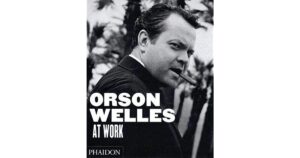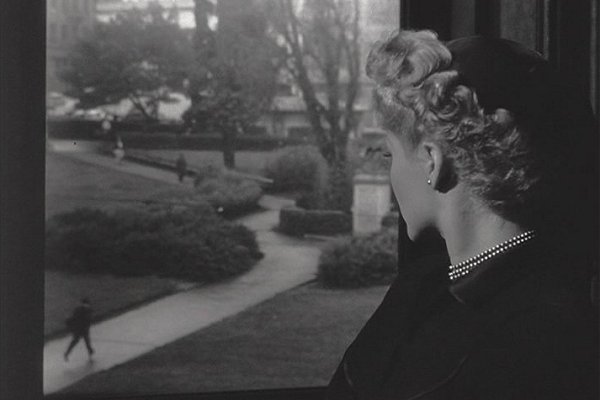I no longer recall where this 2008 review was written for. — J.R.
ORSON WELLES AT WORK by Jean-Pierre Berthomé and François Thomas. London/New York: Phaidon Press, 2008. 320 pp.
Considering how much popular currency is enjoyed by works about Orson Welles that are poorly researched, possibly because they respond so dutifully to existing attitudes and mythologies about the man — most notably, David Thomson’s slipshod biography Rosebud and Michael Epstein and Thomas Lennon’s Oscar-nominated but fanciful documentary The Battle Over Citizen Kane (both 1996) — a reliable book about his filmmaking that doesn’t stoop to special pleading is always welcome. This one, originally published in French a couple of years ago — in an ongoing series of beautifully and copiously illustrated coffee-table books that has already yielded Bill Krohn’s indispensable Hitchcock at Work — is special not just for the amount of fresh information it offers. It’s also invaluable because of the unusual perspectives its two authors bring to their subject.
Jean-Francois Berthomé, author of a definitive book on Jacques Demy, is also an expert on movie set design, the subject of another of his books. François Thomas, an Alain Resnais specialist, once wrote a dissertation on Welles’s sound work (in film, radio, TV, and theatre) that was over a thousand pages long. The authors collaborated in 1992 on the most factually reliable book about Citizen Kane, two chapters of which have appeared in English. So they’re fully qualified to take on the challenge of following Welles’s peripatetic film career on both sides of the Atlantic.

Although there’s lots of fresh information here about such matters as the kinds of lenses Welles used, the sets and costumes he designed himself (or borrowed from elsewhere, when he used some of the costumes left over from El Cid on Chimes at Midnight), and the principles he followed in editing many of his pictures (including the way he sometimes manipulated the musical scores composed by others), the underlying reason for such technical data is critical — to give us a better idea of what Welles achieved onscreen. As the authors note, “one of the lessons we learned during the course of our investigation” is that “the more dislocated Welles films were — in terms of the places in which they shot and then edited — the more secrets they will reveal to the naked eye” (and, they might have added, to the naked ear) “in terms of the thousand-and-one tricks that gifted improviser or conjurer has at his disposal.”
I’m puzzled that the meticulous Berthomé and Thomas overlook my own discovery (while editing This is Orson Welles) that The Lady from Shanghai was scripted by many hands, even though Welles receives sole credit for the screenplay. There are also a few occasions when either the (uncredited) English translation or hasty writing muddle a few issues. When the authors assert that in F for Fake and Filming Othello, Welles’s last two completed features, he “first set out his art of poetry then his discourse on method,” the point registers a lot more smoothly in the French edition. We’re told that Welles himself dubbed all the male actors in The Trial except for Perkins, Jesse Hahn, and Akim Tamiroff, but one of his earliest employees in theater and radio, the late blacklisted and Paris-based director John Berry, once told me he dubbed some voices on the film himself. When we’re informed that “after 1966 [Welles] does not seem to have attempted anything at all in the theatre”, we might be curious — at least I was — about what he attempted to do in 1966. But demurrals of this kind are niggling when one considers the wealth of new material on display here.


